Why Logistics Management Is Crucial in 2025
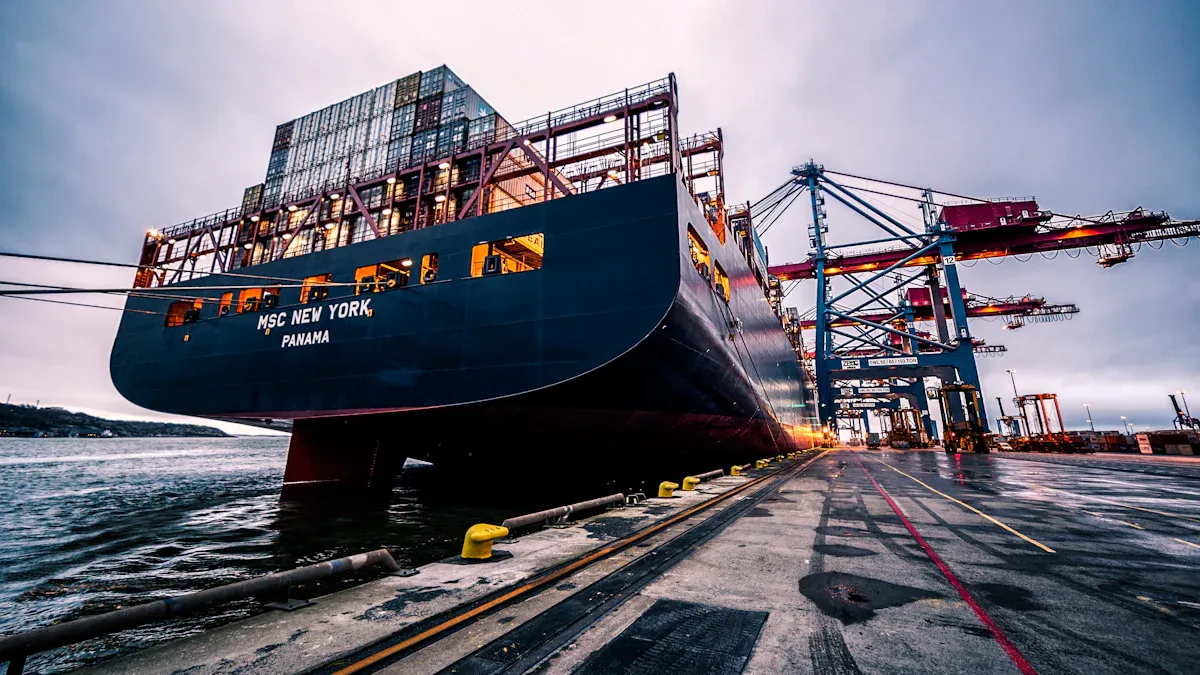
In 2025, logistics management is very important for businesses. Good systems save money by improving routes and using less fuel. Automation changes tasks like managing warehouses, reducing mistakes and delays. Since 76% of supply chains face worker shortages, companies need these changes to satisfy customers and stay ahead.
Key Takeaways
Logistics management cuts costs and works better by planning routes and using less fuel.
Tools like automation and live tracking help businesses act fast during supply chain problems, making customers happier.
Green logistics, like electric trucks, help the planet and meet customer needs for eco-friendly choices.
Understanding Logistics Management and Its Role in Supply Chain Management
What Is Logistics Management?
Logistics management means planning and controlling how goods move. It makes sure products get from the start to the customer. This includes areas like inbound, outbound, reverse, and green logistics. Each area focuses on tasks like moving raw materials or cutting pollution. By meeting customer needs, logistics becomes a key part of supply chains.
Main Jobs and Parts of Logistics Management
Logistics management has important jobs to keep things running well. These include moving goods, storing them, tracking inventory, and filling orders. Tools like planning systems help handle quick demand changes. Training workers helps them understand and use data better. Tracking items and inventory makes work faster and more productive. The table below shows key parts and their benefits:
Factor | Items | Description |
|---|---|---|
Building Skills | Planning tools, worker training, teamwork | Helps adjust to market changes and customer needs. |
Sharing Information | Tracking goods, seeing inventory, linking with suppliers | Improves data sharing and work efficiency. |
These parts work together to make logistics smooth and help businesses succeed.
How Logistics Fits into Supply Chain Management
Logistics is very important for improving supply chains. By matching logistics with company goals, businesses can keep customers happy and stay ahead. This teamwork makes things flexible, cheaper, and quicker during problems. Benefits include:
Using real-time data helps plan better and move goods faster.
Working with suppliers and delivery teams saves time and improves routes.
Smart tools like AI predict needs and make work easier, like Amazon does.
When logistics and supply chains work together, they handle problems and give customers great service.
The Importance of Logistics Management in 2025
Facing Global Supply Chain Problems
In 2025, global supply chains face big challenges. Economic troubles caused by political issues disrupt trade and raise costs. Experts say 56% expect weaker economies this year, while only 17% see improvement. These problems make logistics management crucial for keeping things steady.
Real-time tracking tools and automation can help solve these issues. These tools show what’s happening in supply chains, letting businesses act fast during disruptions. For example, using warehouse systems with supply chain platforms keeps operations smooth. This reduces delays and makes customers happier.
Logistics also helps the environment. Smart route planning with new technology can cut fuel use by 14%. This saves money and lowers pollution, supporting global green goals.
Improving Business Efficiency and Cutting Costs
Good logistics management helps businesses save money and work better. Automation makes tasks faster and reduces mistakes. Companies using tracking tools report 20% lower logistics costs and 30% better efficiency.
Take GreenTech Supplies as an example. Before using advanced logistics, shipping cost $120 per order. After switching, costs dropped to $80, saving 33%. Crafty Creations also saved money and improved delivery by using smart logistics.
The logistics market is growing fast. By 2029, the U.S. market will reach $1.62 trillion. Globally, it will grow from $8.96 trillion in 2023 to $15.79 trillion by 2028, with a yearly growth rate of 6.3%.
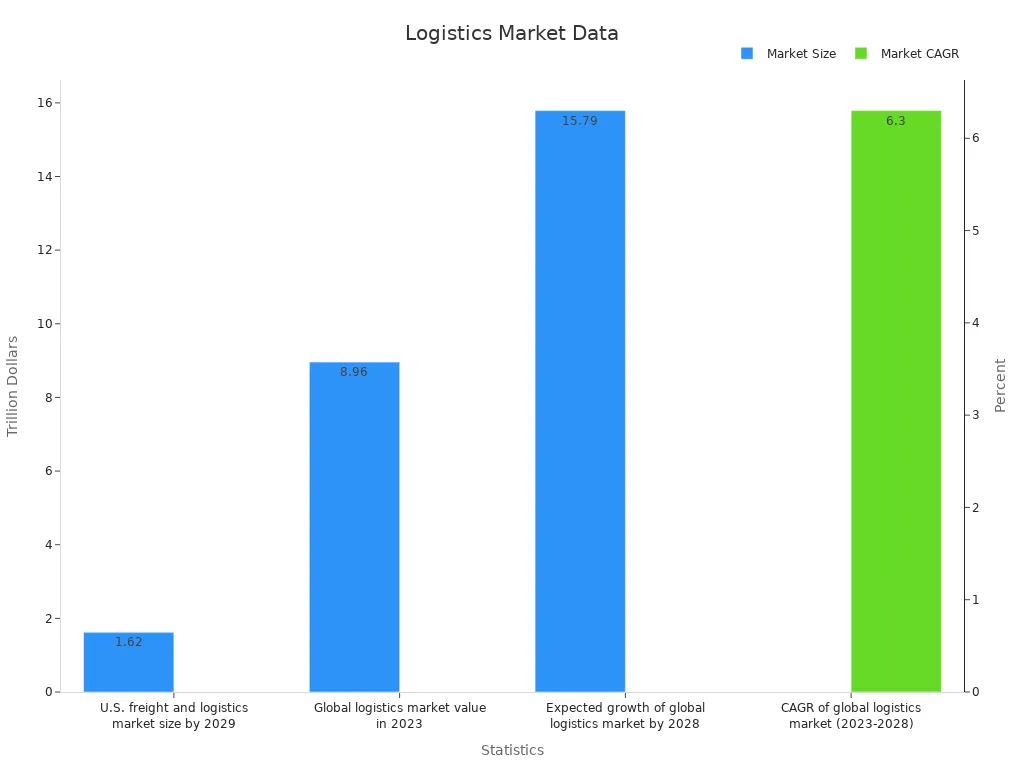
Meeting Changing Customer Needs
In 2025, customers want fast, reliable, and eco-friendly deliveries. A survey showed 41% care more about speed and reliability than price. Also, 85% avoid stores after bad delivery experiences.
To meet these needs, businesses should use tracking tools and flexible delivery options. Customers now expect live updates and delivery times that fit their schedules. Eco-friendly ideas like carbon-neutral shipping and recyclable packaging are also important.
Stores that adjust to these demands see big rewards. Better stock and faster deliveries make customers happy. By focusing on logistics, businesses build trust and loyalty for long-term success.
Emerging Trends and Technologies in Logistics Management
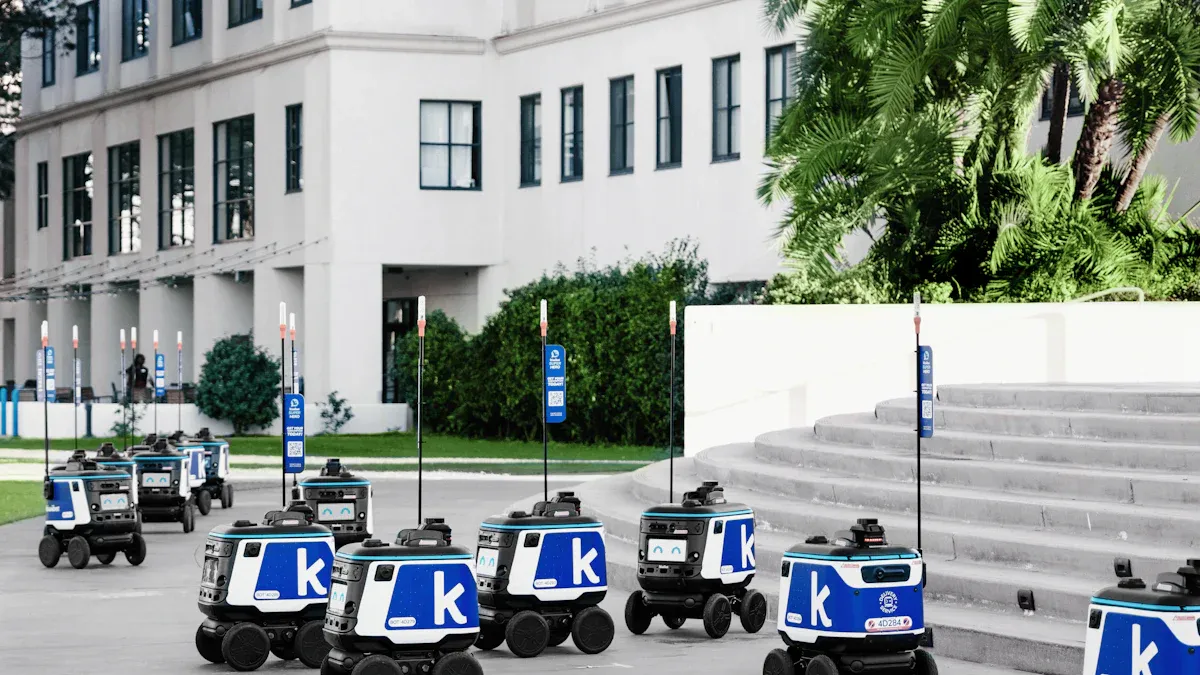
AI and Automation in Logistics
AI and automation are changing how logistics work. Robots powered by AI now do jobs like packing in warehouses. They work all day without needing breaks. Companies like Berkshire Grey use these robots to boost work speed and cut mistakes. Tools like Quinyx help plan worker schedules based on demand, using resources better.
Automation is not just for warehouses. Self-driving trucks could make $400 billion by 2035. FedEx has already saved time and fuel by cutting 700,000 miles from daily routes with smart planning. These tools show how AI and automation make logistics faster and cheaper.
Sustainability and Green Logistics Practices
Sustainability is now a big focus in logistics. Green practices, like using electric trucks and clean energy, are growing. Companies such as UPS and DHL use biodiesel to lower pollution. In 2022, over 60,000 electric trucks were sold worldwide, showing the move to eco-friendly transport.
Green warehouses are also becoming popular. These buildings aim to save energy and cut waste. By 2026, warehouse space will grow by 15.8% due to green solutions. Using green logistics helps the planet and matches global eco-goals.
The Role of IoT and Data Analytics in Supply Chain Management
IoT and data analytics are improving supply chains with real-time updates. Walmart uses sensors and RFID tags to track stock, saving money and keeping shelves full. Maersk uses smart shipping containers to check goods and plan better routes.
Amazon mixes IoT with robots to speed up warehouse work and make customers happy. These tools connect all supply chain data in one place. With IoT and analytics, you can spot delays, make smarter choices, and build stronger logistics systems.
Real-World Applications: How JUSDA and Its Warehousing Solutions Lead the Way
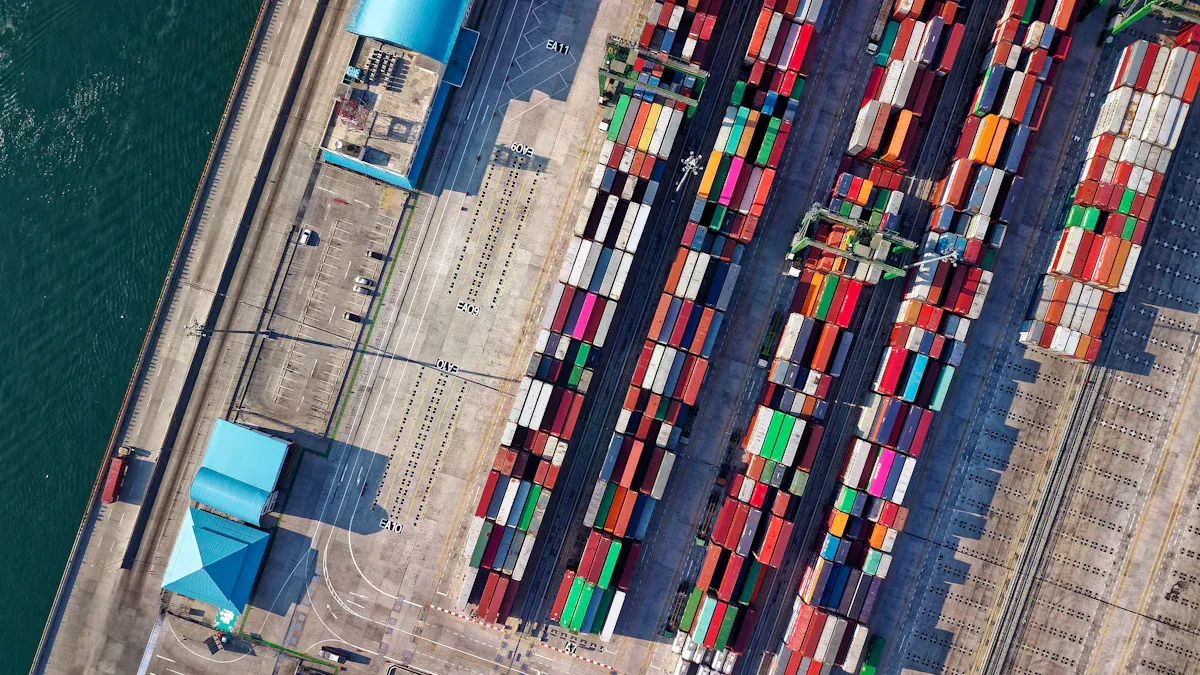
JUSDA's Role in Changing Logistics Management
JUSDA has changed logistics by offering smart global solutions. Started in 2004 in Shenzhen, China, it now helps over 3,000 famous brands. JUSDA runs 100 cross-border centers and works with 3,000 warehouses worldwide.
It provides one-stop services for e-commerce, storage, delivery, and B2B supply chains. JUSDA uses smart tools to give customers updates on their orders. This ensures clear tracking and better control. With air, sea, land, and rail options, JUSDA is fast and reliable.
Metric/Capability | Description |
|---|---|
Transportation Services | Helps over 3,000 famous brands worldwide |
Transportation Centers | Runs 100 cross-border centers |
Global Warehouse Network | Works with 3,000 warehouses globally |
One-stop Solution | Offers e-commerce, storage, delivery, and B2B services |
Actionable Intelligence | Gives customers updates and control over their orders |
Advanced Warehousing Solutions for Better Supply Chains
JUSDA’s warehouses make logistics faster and easier. They cover 2.5 million square meters globally and include clean rooms, bonded warehouses, and delivery centers. Tools like JusLink and eVMI track inventory in real time. This reduces mistakes and improves delivery speed.
These services help industries like electronics, cars, and consumer goods. Extra services like picking, packing, and labeling make work smoother. JUSDA’s focus on digital tools helps businesses save money and deliver faster.
Case Studies: Success Stories from JUSDA's Global Work
JUSDA’s success shows in its work with big companies. For example, Unilever cut forecasting mistakes by 30% and inventory by 15% using JUSDA’s AI tools. Target achieved same-day delivery for 75% of orders by using sortation centers. Walmart improved stock availability and cut inventory costs by 10% with better distribution.
Company | Solution Description | Key Outcomes |
|---|---|---|
Unilever | Used AI tools and digital platforms for supply chain. | 30% fewer forecasting mistakes, 15% less inventory, 60% faster planning. |
Target | Built sortation centers with smart store systems. | 40% less backroom stock, 20% better shelf availability, 75% same-day delivery. |
Walmart | Used cross-docking for better distribution. | 10% lower inventory costs, better stock availability. |
These examples show how JUSDA improves logistics, speeds up deliveries, and helps global businesses succeed.
Managing logistics is vital for success in 2025. Improving supply chains can lower costs by 20% and increase profits by 10%, says McKinsey. JUSDA’s smart tools, like better warehouses, help businesses grow and adjust. Rising rental rates in Europe show how important logistics is becoming.
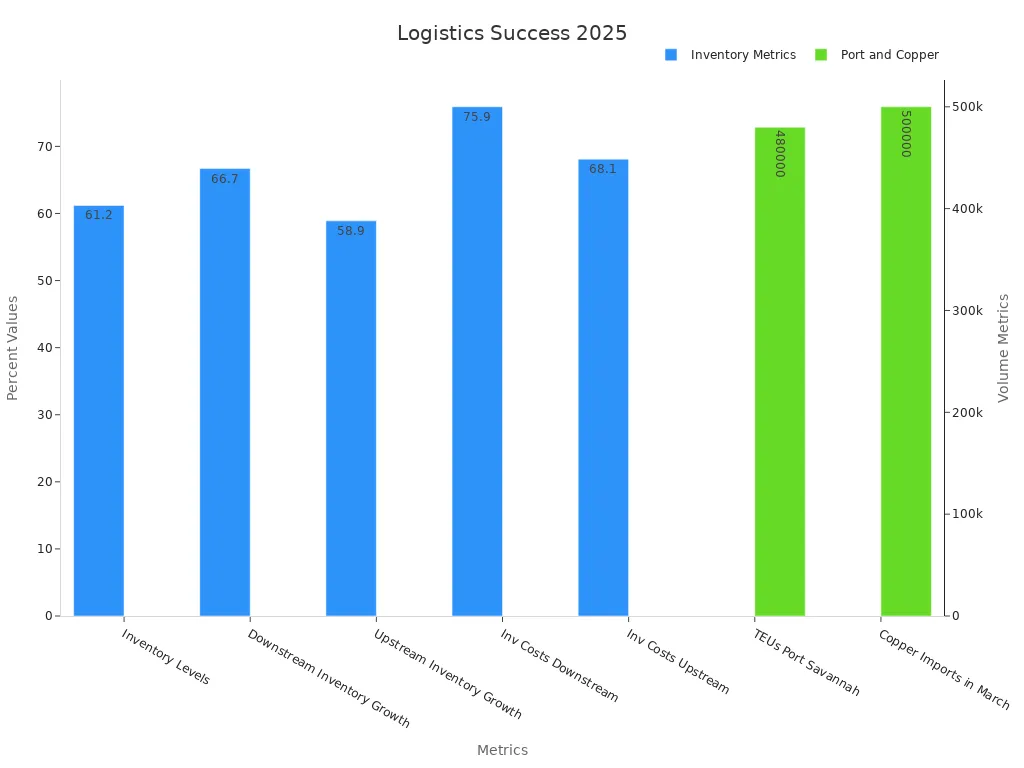
See Also
Five Leading Logistics Programs To Watch In 2024
The Importance Of Logistics Security In Supply Chains
Transforming Logistics With AI In The Supply Chain
Achieving Success In High-Tech Manufacturing Through Lean Logistics
